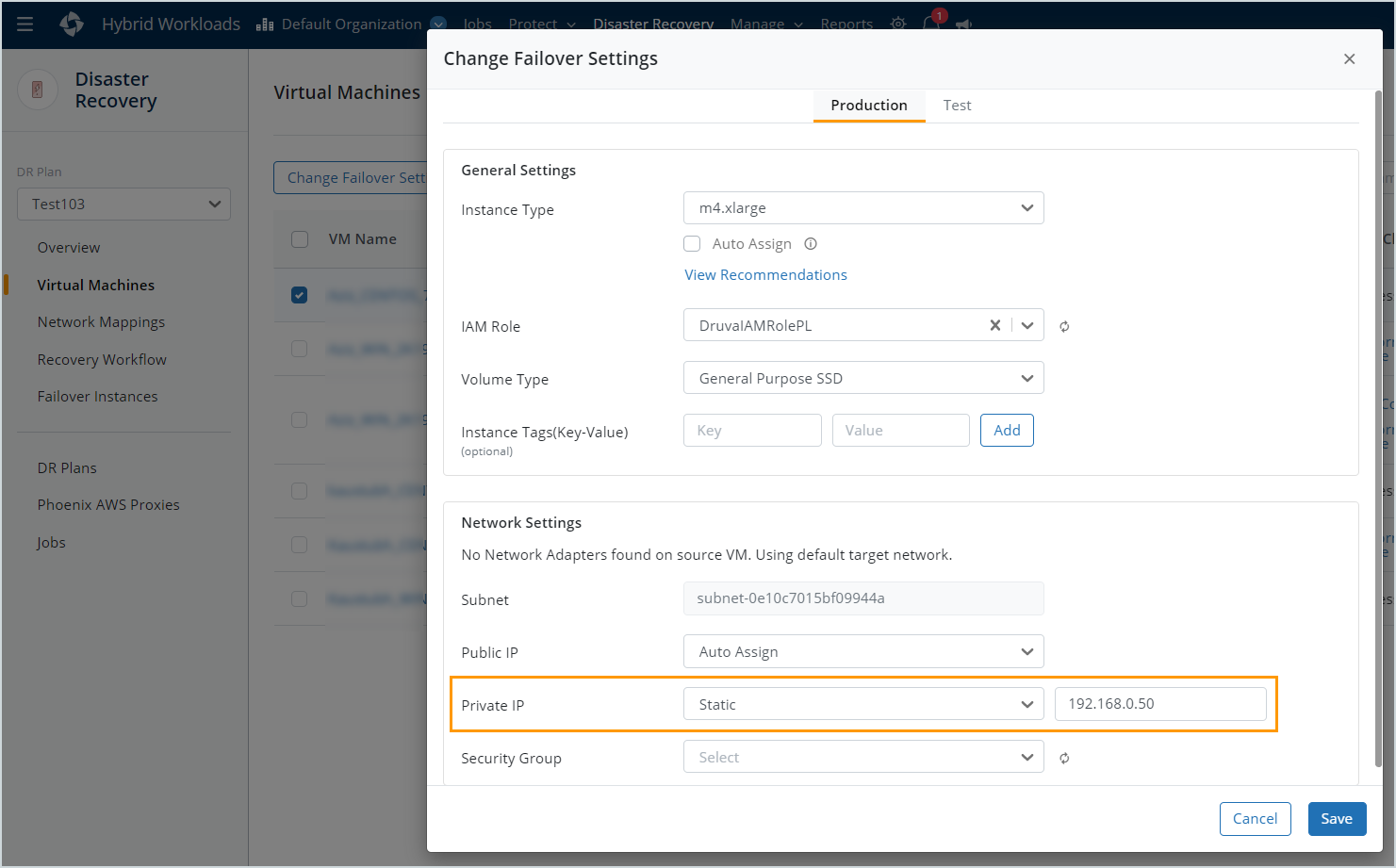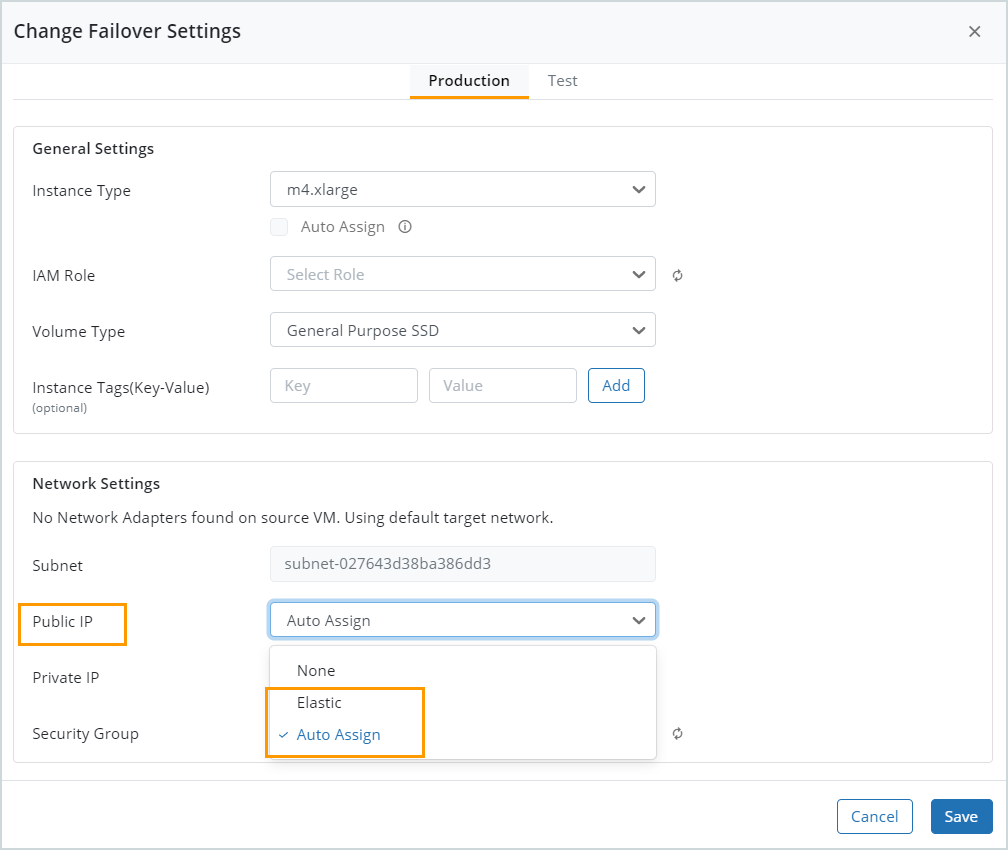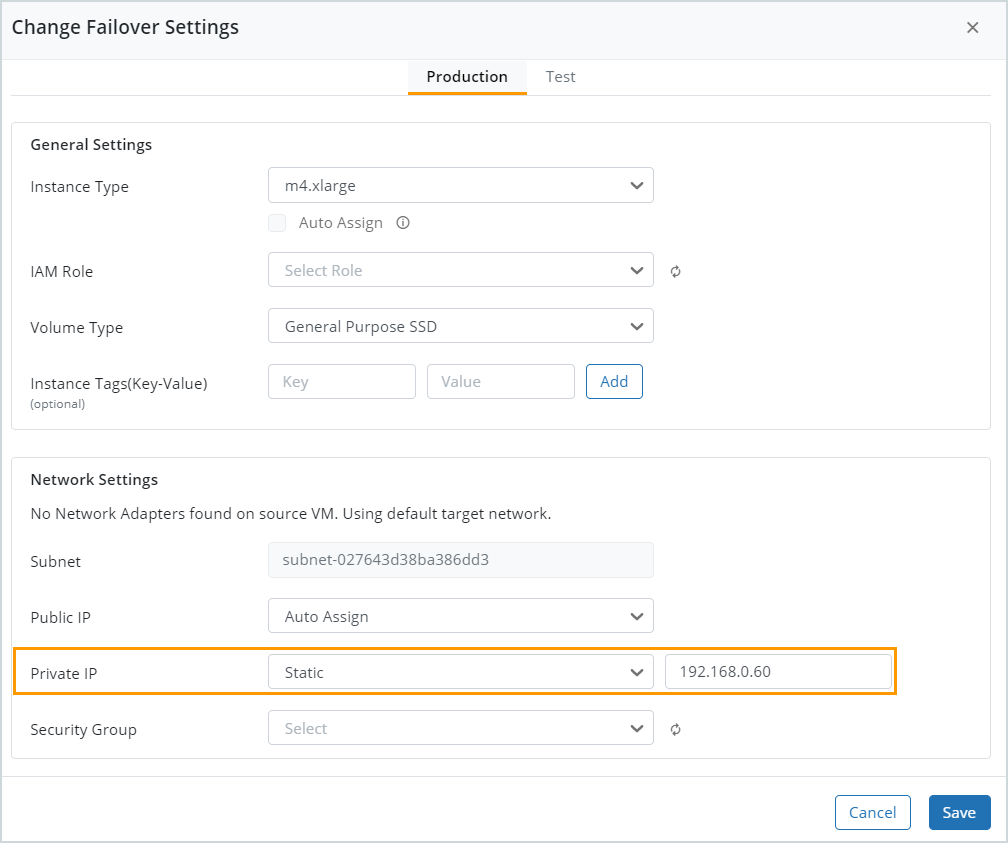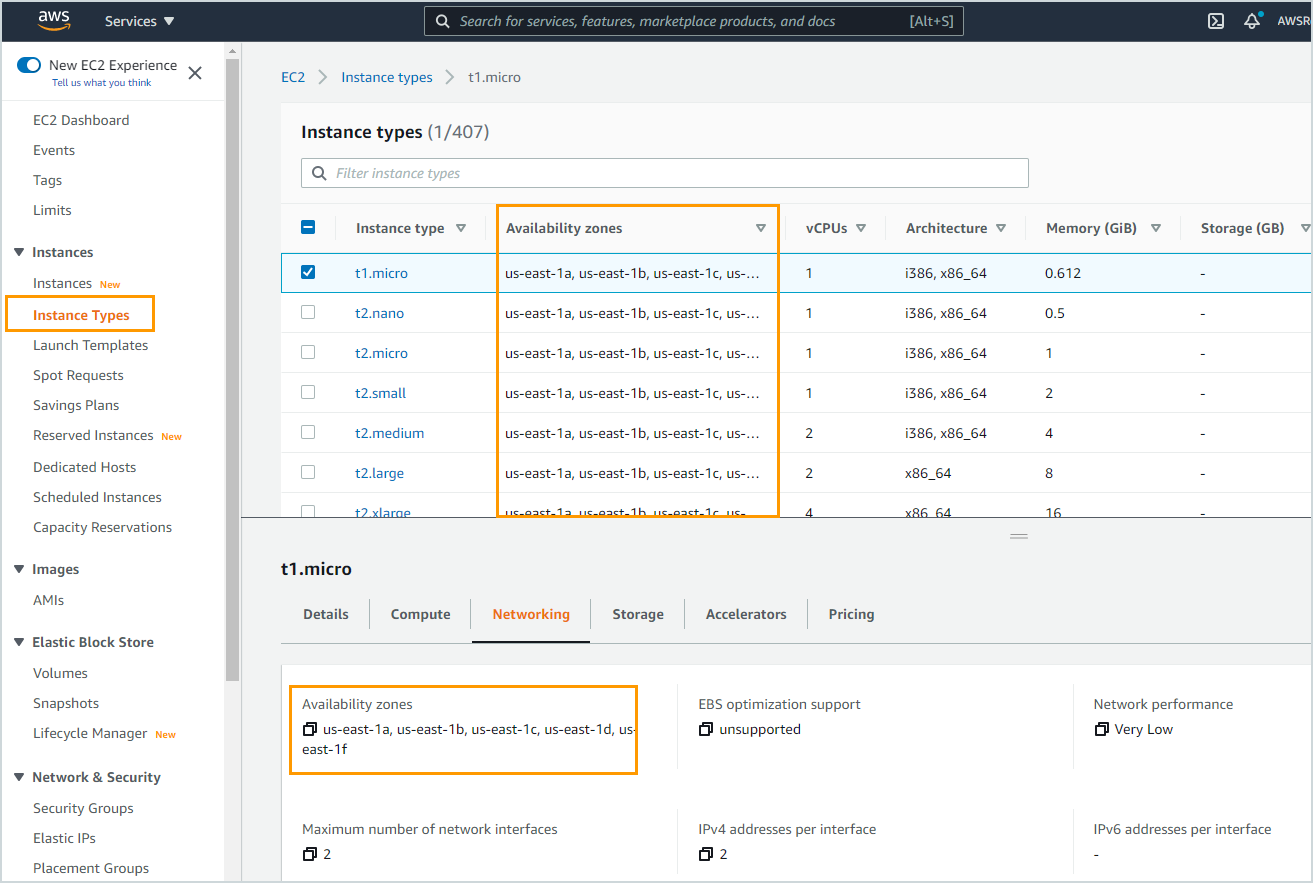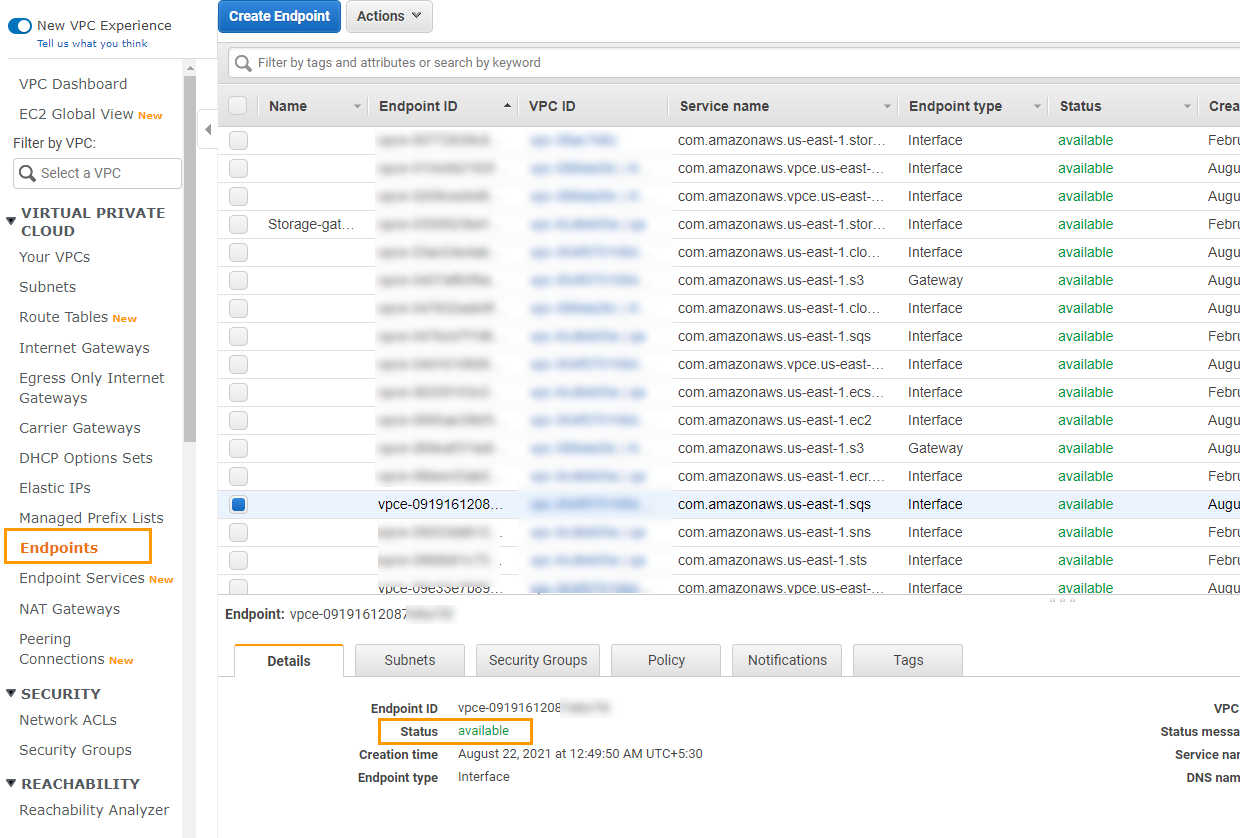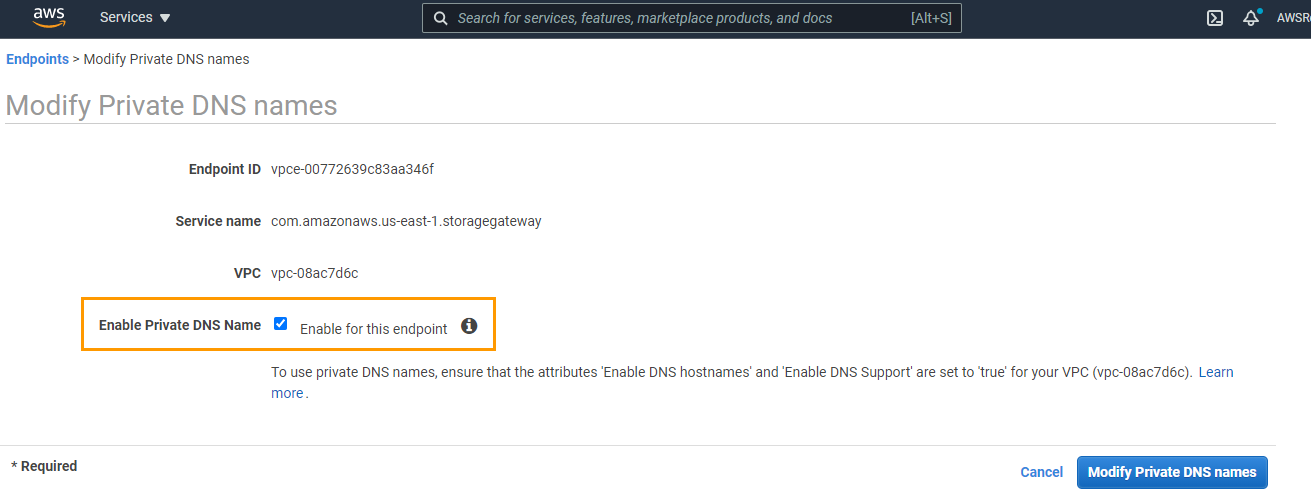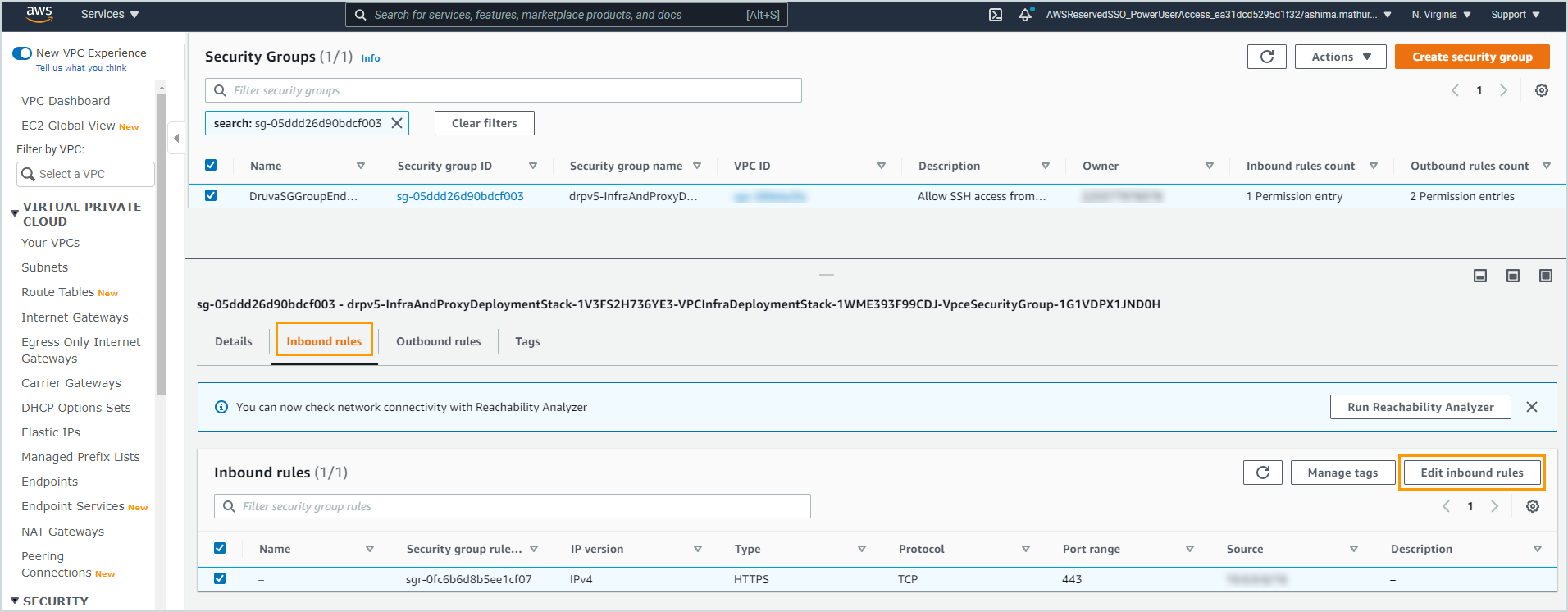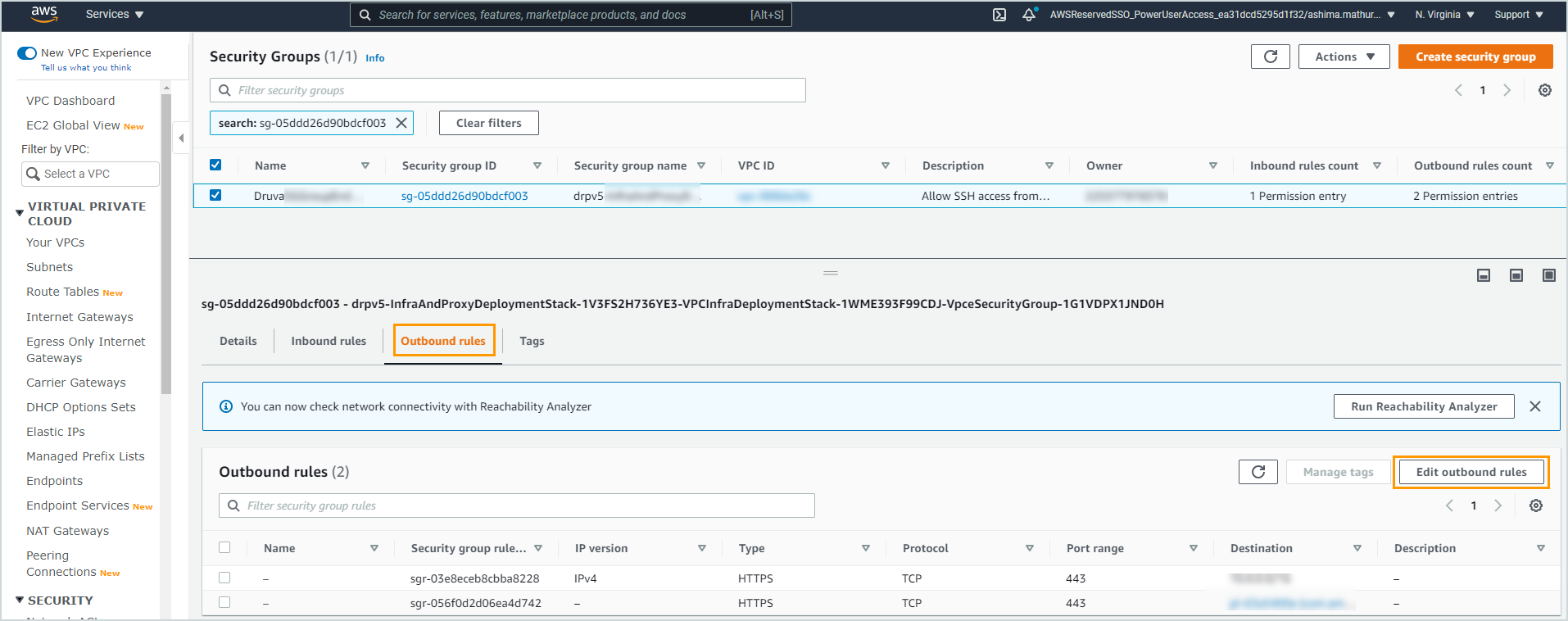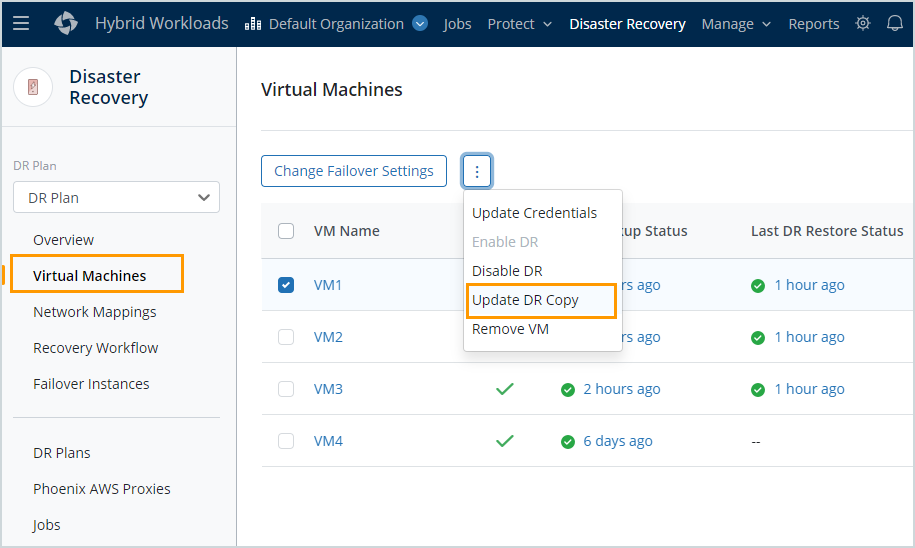DR Failover Checks - Environment
Enterprise Workloads Editions
❌ Business| ✅ Enterprise (Purchase Separately) | ✅ Elite
Overview
In the event of an actual disaster, the last thing you'd want is for your DR failovers to fail. Druva preemptively flags issues in your AWS environment and the DR plan configuration that can cause your DR failovers to fail. Fix any identified issues proactively before disaster strikes and failover your VMs with confidence when you need to.
You can run the DR Failover environment checks on demand. Druva also runs these checks every day at 10:30 PM UTC.
Druva checks the following as a part of DR Failover Checks - Environment:
Accessing the DR Failover Checks - Environment
You can access the DR Failover Checks - Environment from the DR Plans page, or directly from the DR plan’s Overview page.
- Log in to the Management Console.
- From the drop-down next to All Organizations, select the Organization in which you’ve configured VMs for disaster recovery.
- On the menu bar at the top, click Disaster Recovery.
- On the DR Plans page, the Failover Check Status (Environment) column displays the status of the latest DR failover environment check for each DR plan.

Clicking the status takes you to the Overview page of the corresponding DR plan. You can also select the DR plan from the DR plan drop-down and then view the Overview page. The Overview page in the DR plan shows you the Failover Checks - Environment and Failover Checks - Guest OS cards.

Clicking the hyperlinks in either of these cards takes you to a filtered Virtual Machines page. This page is filtered by the check status and gives you details on how to fix the identified issues.
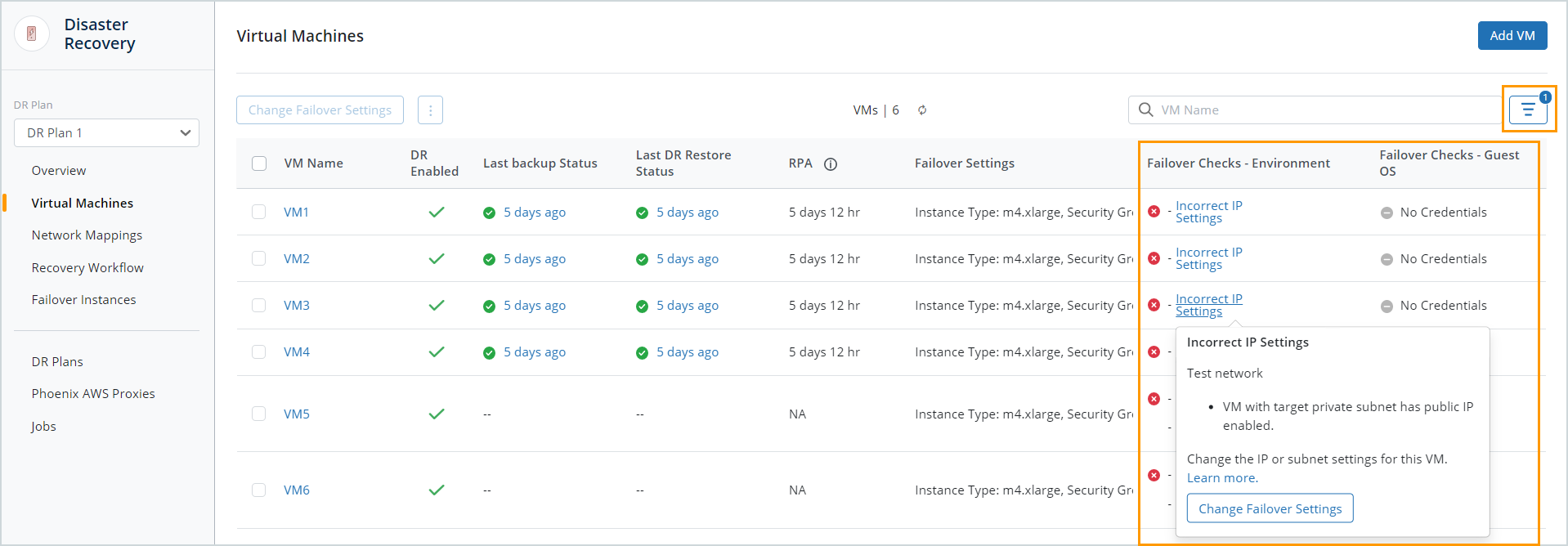
Overview page
The Overview page has the Failover Checks - Environment card and the Failover Checks - Guest OS card. The following tables describe the fields in each of these cards.
Failover Checks - Environment

| Field | Description |
|---|---|
| Subnet | This column lists the subnets in the VPC that have an issue that could cause failovers to fail. |
| Issues | This column explains the issue identified with the associated subnet. Click more to see details about the issue and how to resolve it. See Subnet checks. for issue resolution. |
| x VMs Incorrect IP settings |
Lists the number of VMs whose IP settings are incorrect. The number of VMs is a hyperlink that takes you to the Virtual Machines page, filtered to display all the VMs with incorrect IP settings. Click the hyperlinks in the Failover Checks - Environment column on the Virtual Machines page to view details and learn how to fix the issue. |
| x VMs DR copy unavailable |
Lists the number of VMs whose DR copy is unavailable. The number of VMs is a hyperlink that takes you to the Virtual Machines page, filtered to display all VMs whose DR copy is unavailable. Click the hyperlinks in the Failover Checks - Environment column on the Virtual Machines page to view details and learn how to fix the issue. |
|
x VMs |
Lists the number of VMs whose instance type is incorrect. The number of VMs is a hyperlink that takes you to the Virtual Machines page, filtered to display all the VMs with incorrect instance types. Click the hyperlinks in the Failover Checks - Environment column on the Virtual Machines page to view details and learn how to fix the issue. |
Fix any identified issues and then rerun the check by clicking Rerun Check. Ensure that all the checks have passed before running a failover job.
Failover Checks - Guest OS

| Field | Description |
|---|---|
| X/Y VMs with issues |
X of a total of Y VMs in the DR plan have issues with the guest OS that could cause failovers to fail. |
|
Guest OS check status of VMs (Circular chart) |
This is a graphical representation of the guest OS check statuses of all VMs in the DR plan. Hovering over the colored segments gives you the number of VMs with a specific issue with the guest OS check. |
| Status |
The number of VMs with a specific Guest OS check status. Clicking the hyperlink next to the VM status takes you to the Virtual Machines page, which is now filtered to show all the VMs with the specific status. The statuses are:
See DR failover checks - Guest OS for more information. |
Virtual Machines page
The Failover Checks - Environment column gives details on potential causes of failover failures due to AWS environment and DR plan configuration issues. You may see the following issues in this column:
The following section describes the checks in detail and tells you how to resolve the identified issues.
Issue resolution
The following table describes the scenarios when each of these checks fail and how to resolve the identified issues.
Incorrect IP settings
The IP settings for both the Production and Test environments are checked.
| Error | Resolution |
|---|---|
| Static IP x.x.x.x for subnet <subnet ID> is already in use. |
The selected static IP address is already being used. Select another IP address in the specified subnet.
|
| No IPs in subnet <subnet ID> are available. |
There aren't any available IP addresses in the specified subnet. Select another subnet by updating the network settings or release IP addresses from the existing subnet using the AWS Management Console. To select another subnet:
|
| VM with target private subnet has public IP enabled. |
A VM with a target private subnet must only have private IP enabled. Disable the public IP by changing the failover settings.
|
| VM with target public subnet has public IP disabled. |
A VM with a target public subnet must have public IP enabled. Enable the public IP for the virtual machine in the failover settings.
|
| Static IP x.x.x.x is not in CIDR. |
The static IP address is not in the subnet CIDR. Enter another IP address that is in the subnet CIDR in the failover settings.
|
| Elastic IP x.x.x.x. in the subnet <subnet ID> is not available. |
The specified elastic IP address is unavailable. Enter another elastic IP address available in your AWS account or use Auto Assign in the failover settings.
|
| Unable to validate IP settings as the subnet <subnet ID> does not exist. |
The specified subnet may have been deleted. Select a valid subnet in the Network Mapping settings.
|
| Unable to verify if the static IP is available. Ensure that the IAM role assigned to the Druva AWS proxy has the DescribeNetworkInterfaces permission. | Ensure that the IAM role assigned to the Druva AWS proxy has the DescribeNetworkInterfaces permission. See the Druva IAM Policy article for more details. |
Incorrect instance type
The instance type for both Production and Test environments is checked.
| Error | Resolution |
|---|---|
| Instance type is incompatible with the VM hardware configuration. | Select an instance type that is compatible with the hardware configuration of the VM in terms of CPU, RAM, AWS region, and OS. Alternatively, you can also let Druva automatically assign a compatible instance type by selecting the Auto Assign option. See Manage disaster recovery failover for details. |
| Instance type is unsupported in the availability zone. |
Select an instance type that is in the same availability zone as the subnet. To determine which availability zones is the instance type available in, perform the following tasks:
Alternatively, you can also let Druva automatically assign a supported instance type by selecting the Auto Assign option. See Manage disaster recovery failover for details. |
Subnet checks
Note: We do not support validations of:
- VPC associated with multiple CIDRs
- Private NAT gateways
| Error | Resolution |
|---|---|
| SQS endpoint is unhealthy as: Endpoint vpce-XXXX state is not available. |
Ensure that the SQS endpoint is in an available state.
|
| AWS SQS Services not reachable from subnet. | Check the connectivity between the subnet and the AWS SQS service. Ensure that either the subnet has internet connectivity through an Internet Gateway or NAT or has an endpoint to the AWS SQS service. See Create SQS endpoint for details. |
| SQS endpoint is unhealthy as: Private DNS is not enabled for endpoint vpce-XXXX. |
Enable the Private DNS name option in the endpoint settings through the AWS Management console.
|
| SQS endpoint is unhealthy as: Security groups of vpc endpoint vpce-XXXX do not allow inbound HTTPS traffic for the VPC. |
The security groups must allow inbound HTTPS traffic for the VPC CIDR block.
|
| SQS endpoint is unhealthy as: Security groups of vpc endpoint vpce-XXXX do not allow outbound HTTPS traffic for the VPC. |
The security groups must allow outbound HTTPS traffic for the VPC CIDR block.
|
| SQS endpoint is unhealthy as: Security groups of vpc endpoint vpce-XXXX do not allow inbound and outbound HTTPS traffic for the VPC. |
The security groups must allow inbound and outbound HTTPS traffic for the VPC CIDR block.
|
| AWS S3 and SQS Services not reachable from subnet. | Check the connectivity between the subnet and the AWS SQS service and the AWS S3 service. Ensure that either the subnet has internet connectivity via an internet gateway or NAT or has an endpoint to the AWS SQS and AWS S3 service.See Create Amazon S3 and SQS endpoint for details. |
| AWS S3 Service not reachable from subnet. | Check the connectivity between the subnet and the AWS S3 service. Ensure that either the subnet has internet connectivity via an internet gateway or NAT or has an endpoint to the AWS S3 service. See Create Amazon S3 endpoint for details. |
| S3 endpoint state is not available. | Ensure that the S3 endpoint is in an available state. If the S3 endpoint cannot be made available, Delete the S3 endpoint and create a new one See Create Amazon S3 endpoint for details. |
| Subnet no longer exists. |
The selected subnet no longer exists. Select a different subnet from the Network Mappings page.
|
| Unable to fetch information about the subnet. | Perform the following actions:
|
| Unable to fetch information about the VPC endpoints. Ensure that the IAM role assigned to the Druva AWS proxy has the DescribeVpcEndpoints permission. | Ensure that the IAM role assigned to the Druva AWS proxy has the DescribeVpcEndpoints permission. See Druva IAM Policy for details. |
| Information for NAT gateway <nat-xxxxx> is unavailable. Ensure the NAT gateway exists in the subnet. | Ensure the NAT gateway exists in the subnet. If the NAT gateway <nat-xxxxx> has been deleted, add an active NAT gateway route in the subnet’s route table. |
| Information for NAT gateway <nat-xxx> is unavailable. Ensure the NAT gateway is in an available state. | Ensure the NAT gateway is in an available state. If the NAT gateway <nat-xxxxx> has been deleted or is unavailable, add an active NAT gateway route in the subnet’s route table. |
| Information for NAT gateway <nat-xxx> is unavailable. Ensure the Druva AWS proxy has the DescribeNatGateways permission | Ensure that the IAM role of the Druva AWS proxy has the DescribeNatGateways permission. See Druva IAM Policy for details. |
DR Copy Availability
| Error | Resolution |
|---|---|
|
One or more EBS snapshots (snap-xxx,snap-yyy) in the latest DR copy do not exist. |
Update the DR Copy (Restore DR Copy).
|
| The DR copy job was not run for this VM. Update the DR copy. |
Fix any identified issues and then rerun the check by clicking Rerun Check on the Overview page of the DR plan.


